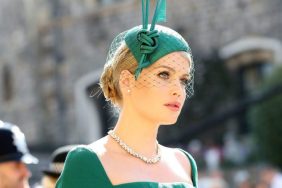Photo: S. J. Moodley, [Boy with sunglasses in a chair], ca. 1978.
South African photographer Singarum “Kitty” Jeevaruthnam Moodley was born into an Indian family in the province now known as KwaZulu-Natal in 1922. At the age of 35, he left his job working as a machinist in a shoe factory to establish Kitty’s Studio, a family-run photographic studio in the mid-sized city of Pietermaritzburg, which he ran for three decades, until his death in 1987.
Also: “Black is Beautiful”: The Photographs That Started a Movement
After his death, many of the studio’s negatives were purchased by the Campbell Collections in Durban, now part of the University of KwaZulu-Natal. Those deemed incompatible with the historical collection were culled from the archive and some 1,400 negatives were ultimately acquired by Columbia University professor Dr. Steven C. Dubin—and thus a legacy has been cultivated and preserved.

S. J. Moodley, [Three men dancing in a line], 1975
Dr. Dubin has co-organized a new exhibition of work, Who I Am: Rediscovered Portraits from Apartheid South Africa, now on view at The Walther Collection Project Space, New York, through September 3, 2016. The portraits were taken between 1972 and 1984, offering a new look at the history of South Africa. A passionate community activist and fervent opponent of apartheid, Kitty’s photographs speak to the love and high regard he held for his fellow wo/man.
The apartheid state of South Africa, enforced through legislation by the National Party (NP), who held power from 1948–1994, grew out of racial segregation under Dutch colonial rule. Following the demise of Nazi party in the aftermath of World War II, the NP reorganized themselves and took control of the government after exploiting white fears while campaigning in the 1948 election. Once in power they solidified their power for half a century, operating a regime of terror against the native population.

S. J. Moodley, [Family portrait], 1974
Kitty’s photographs take us into a world few have ever seen, life during apartheid, as seen from the inside looking at itself. His portraits are simply exquisite visions of his world, of the people who come before the camera, ready to be captured for the ages. Here, in the thick of the second half of the twentieth century at the height of apartheid, we see what remains: the strength of the soul to speak truth to power.
Kitty’s sitters are the bold and beautiful, the people who would have been classified under the apartheid regime as “African,” “Indian,” and “Coloured” are the livest in the room. Fashions and accessories, poses and attitude, this is the true South Africa in all of its glory. These are not images made by outsiders looking in, by foreign journalists and conflict photographers. These are images made by one man: Kitty. An original.

S. J. Moodley, [Two men with floral decoration], ca. 1978
Kitty did not live to see Nelson Mandela take power and become the first president of South Africa, but in his photographs you can see that he knew. He knew the day would come.
All photos: Courtesy The Walther Collection.
Miss Rosen is a New York-based writer, curator, and brand strategist. There is nothing she adores so much as photography and books. A small part of her wishes she had a proper library, like in the game of Clue. Then she could blaze and write soliloquies to her in and out of print loves.




